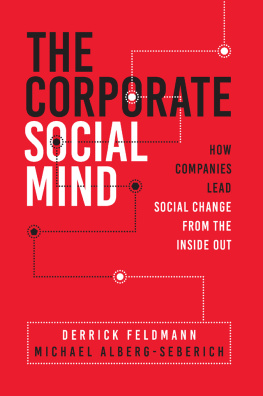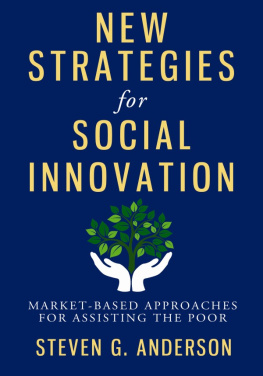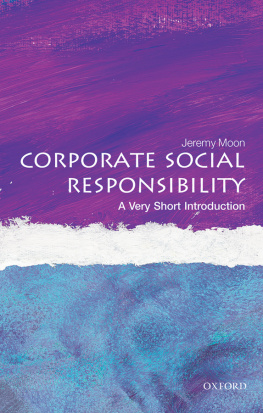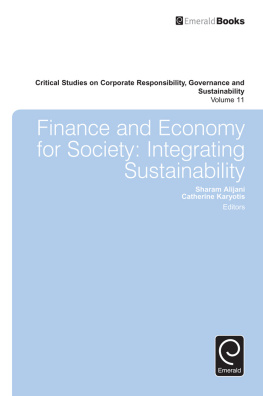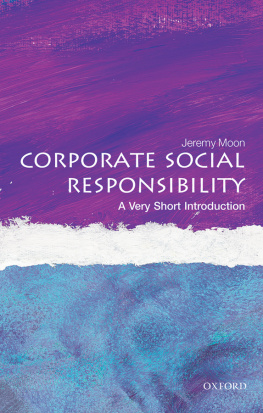First published 2020 in Great Britain and the United States by ISTE Ltd and John Wiley & Sons, Inc.
Apart from any fair dealing for the purposes of research or private study, or criticism or review, as permitted under the Copyright, Designs and Patents Act 1988, this publication may only be reproduced, stored or transmitted, in any form or by any means, with the prior permission in writing of the publishers, or in the case of reprographic reproduction in accordance with the terms and licenses issued by the CLA. Enquiries concerning reproduction outside these terms should be sent to the publishers at the undermentioned address:
John Wiley & Sons, Inc.
The rights of Nacer Gasmi to be identified as the author of this work have been asserted by him in accordance with the Copyright, Designs and Patents Act 1988.
Introduction
Human behavior has always been evaluated, both in terms of its effectiveness and acceptability. Companies are not immune to this type of behavior (Pasquero 2007). The effective component of corporate behavior, which is associated with financial performance, has always been at the heart of corporate discourse. This performance has led companies to only focus on innovation strategies that are likely to further enhance their competitiveness and therefore their profitability. Yet, increasingly, the acceptable dimension of their activities for external and internal stakeholders is also becoming a decisive strategic issue for companies. In recent years, there has been an expectation from consumers that a companys brands should not only offer them functional advantages, but that companies should also invest in corporate social responsibility (CSR) initiatives, that is, community initiatives. Since World War II, through their activities to create value (profit), multinationals have generated significant growth that has made it possible to significantly reduce the rate of global poverty and to create positive externalities, such as new jobs, new services and state budgetary contributions through various taxes (Kaplan et al. 2018).
Unfortunately, this growth has not benefited all populations. In developed economies, the most recent gains have benefitted a small proportion of the population, while many members of the working, rural and urban classes have suffered as a result of socio-economic decline. In addition, these enterprises often induce negative social and/or environmental externalities, such as lay-offs, psychosocial risks, occupational accidents and pollution due to climate deregulation. The trajectory of production models is always shaped by the economic, social and political climate of a given period. Until the 1980s, responses to problems of social responsibility were part of a reactive approach to gradually adapt to environmental and social regulations (Berry and Rondinelli 1998).
While the idea of CSR is sometimes presented as a novelty (dHumires and Chauveau 2001), concerns about the consequences of economic activities have always been prevalent. The idea of CSR, which involves discourse and practice between businesses and society, dates back at least to the beginning of the 20th Century in North America (Acquier and Gond 2007). In the industrial era, paternalism was an early modern form of CSR. Today, social practices must be sustainable because, as Lars Rebien Sorensen, CEO of the Novo Nordisk Group, pointed out, corporate social responsibility is nothing more than maximizing the value of the company over time, because in the long run, social and environmental problems become financial problems (Ignatius 2015). The justification for CSR is associated with the representation of the nature and role of the enterprise and its raison dtre.
The more a company is concerned about the impact its activities may have on the rest of society, the more it is considered a socially responsible company (Pasquero 2007). CSR thus becomes an exemplary positive theoretical approach, as it challenges the contractual-legal vision of the company. This contractual vision of CSR, which advocates a more partnership-based approach to corporate governance, is part of the process of creating shared value (CSV). The correlation between societal progress and commercial success is becoming increasingly apparent. To this end, if all companies could stimulate societal progress in all regions of the world, the result would be a decrease in poverty, pollution, disease, and an increase in corporate profits (Kramer and Pfitzer 2017). According to these authors, there are two reasons why CSR practice has become imperative for companies. The first concerns the questioning of the legitimacy of businesses, which have come to be perceived as thriving at the expense of the community as a whole. The second relates to the numerous global problems, ranging from inequality to global warming, which are of such magnitude that solutions require the expertise and inspirational models of the private sector. Much of the work on CSR focuses on its contributions to business and society. This type of strategy involves devising responses to social and environmental problems generated by a companys internal activities, or to problems that are external to it. Until the 2000s, strategies for integrating these issues were mainly the prerogative of large companies. Environmental and societal issues, which threaten people and companies in all countries, require companies to redefine their societal strategies and business philosophy, in order to create new value and prosper, by sharply reducing negative societal externalities generated by their activities, or by creating positive externalities (Winston 2017). Thus, all companies, whatever their activity and size, must take into account both financial and non-financial issues in their daily management, that is, to move towards global performance, because, as Lash and Wellington (2007) point out, societal issues present risks that may be irreversible for them and for society. Companies interest in societal issues and their solutions is part of a strategic logic that requires all organizations to formalize their ideology. This ideology includes all of their values (social, environmental, organizational ethics) and shared beliefs about their mission (Desreumaux 2005), and goes beyond profit creation and compliance with regulations. The integration of societal issues into a companys strategy therefore forms part of new trends that are raising awareness of two major strategic issues, united by a common goal.
The first issue corresponds to a strategy of legitimization anchored in the companys institutional communication (Dimaggio and Powell 1983; Suchman 1995; Philips et al. 2004), and in the congruence of the companys values with those deemed appropriate by society (Philippe 2006). The second issue, described as Porters hypothesis, subordinates societal investment to a vision based on the reduction of negative social and/or environmental externalities produced by the firms activities (societal performance) while improving its competitive advantage (financial performance). The concept of externalities generates external effects (positive or negative) that generally refer to relations between agents that do not pass through the price mechanism (i.e. non-market effects) and therefore do not receive monetary compensation. Positive societal externalities correspond to environmental and/or social practices that are perceived as generating private costs and collective environmental and social benefits. Their production thus contributes to the well-being of agents other than the adopter (Gasmi and Grolleau 2003). In the case of negative externalities, their counterpart is left to the stakeholders. Positive environmental and/or social externalities therefore result from innovations, to enable the company that develops them to correct market failures and, in particular, the negative external effects on society (Daudigeos and Valiorgue 2010), that result from its economic activity. Kapp (1971) defines these effects as direct or indirect losses incurred by third parties or the general public, as a result of a companys activity. For example, a negative social externality may be associated with the manufacture of products that have a negative impact on customers (e.g. processed food products that lead to obesity), and a positive social externality may be associated with the manufacture of products that improve the health of customers (e.g. organically produced food products). Negative environmental effects can, for example, correspond to practices that generate greenhouse gas (GHG) emissions and therefore pollution, non-recycled waste, etc., while a positive environmental externality corresponds to practices that reduce these negative effects.





